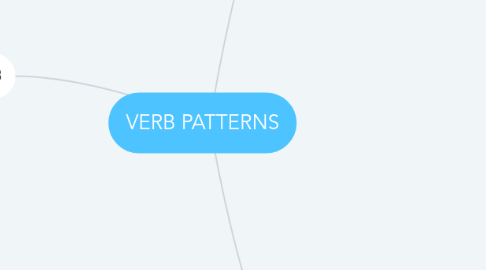
1. Verb Pattern #3
1.1. we use an object (a person or thing) between the verb and the infinitive
1.2. This verb pattern is possible with the following verbs: advise allow invite order remind tell
1.3. The teacher allowed the student to go to the washroom.
1.4. Allow and advise can be used with this verb pattern or with gerunds
1.5. The following verbs can be used with infinitives with or without objects: ask expect need want would like
1.6. Verb + Infinitive Verb + Object + Infinitive Angela asked to leave. Angela asked Simon to leave. Angela: "May I please leave?" Angela: "Simon, please leave."
2. Verb Pattern #1
2.1. Gerunds are verbs that end in ing and function as a noun in a sentence. They are found in places where usually we use a noun:
2.1.1. Soccer is an enjoyable activity. Watching soccer is an enjoyable activity.
2.2. We can make negative gerunds by using not + gerund:
2.2.1. She asked about not paying tax.
2.3. In this level, we will focus on three main ways to use nouns and gerunds: subjects, objects of prepositions and objects of verbs.
2.3.1. The subject of the sentence is usually a noun, and so a gerund is also common:
2.3.1.1. Skates are necessary in ice hockey. Wearing skates is necessary in ice hockey.
2.3.2. Objects of prepositions (usually the words after prepositions) are also usually nouns, so gerunds are also possible:
2.3.2.1. The medal is for the race. The medal is for winning the race.
2.3.3. Objects of verbs are also usually nouns, and so gerunds are also possible:
2.3.3.1. I love this country. I love being in this country.
2.4. There are many verbs in English that can be followed by gerunds. In this level we will focus on the following: admit can't stand discuss forget* love* prefer* start* advise consider dislike hate* mind quit stop* allow continue* don't mind imagine miss recommend suggest avoid delay enjoy keep postpone regret try* begin* deny finish like* practice remember*
3. Verb Pattern #2
3.1. to + the base form of a verb. This is called the infinitive.
3.2. The verbs below are often used with infinitives: agree ask choose decide expect fail have hope intend learn need offer plan pretend promise refuse want would like
3.3. Not goes before the infinitive in the negative form:
3.4. The verbs below can be followed by gerunds or infinitives. There is no difference in meaning between the two grammar forms. begin continue hate like love prefer start
3.5. When we use the verb forget with gerunds, we are saying that the action was done, but the person has no memory of doing it.
3.5.1. Jack forgets meeting me. He has met me, but he has no memory of it.
3.6. When we use the verb remember with gerunds, we are saying that the action was done, and that the person has a memory of doing it.
3.6.1. I remember going there when I was a child. I went there when I was a child, and I have a memory of it still.
3.7. When we use remember or forget with infinitives, we are saying why we did or didn't do the action.
3.7.1. I forgot to bring my money. I didn't bring my money because I forgot to do it. She remembered to call him. She called him because she remembered to do it.
3.8. When we use try with a gerund, our meaning is to experiment with something.
3.8.1. If you can't sleep, you should try drinking warm milk
3.9. When we use try with an infinitive, it means we are making an effort to do something:
3.9.1. He never tries to speak English outside of school.
3.10. When we use a gerund with stop, our meaning is that the action finishes / ends:
3.10.1. You should stop working and take some time off.
3.11. When we use stop with an infinitive, we are saying that we stop an action in order to do something else:
3.11.1. We stopped to take some photos. We stopped doing an action (maybe driving) in order to take photos.

